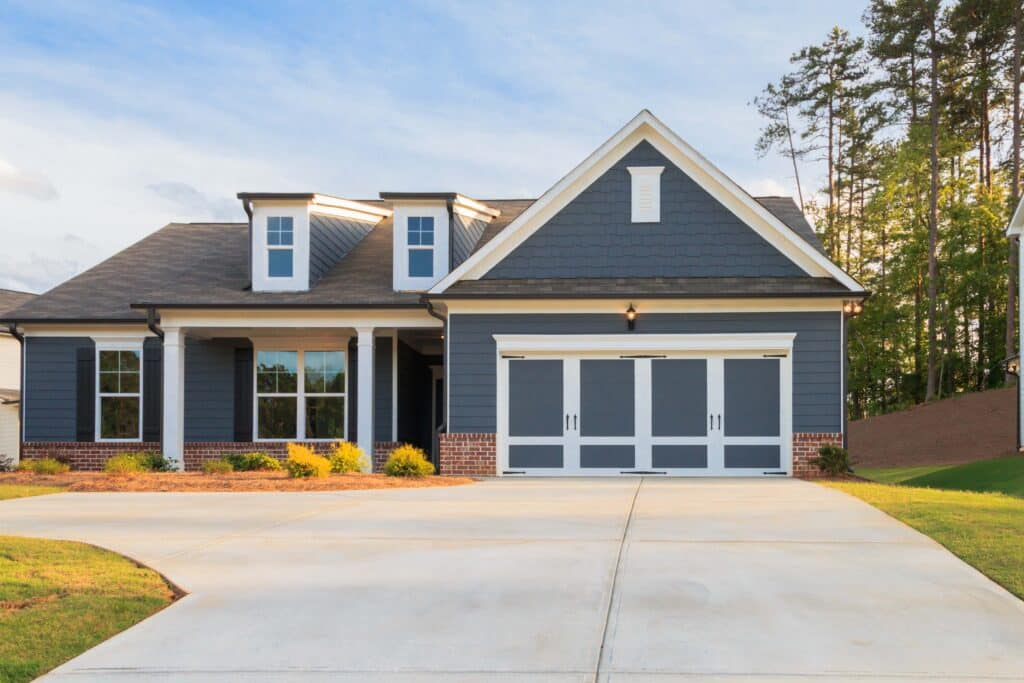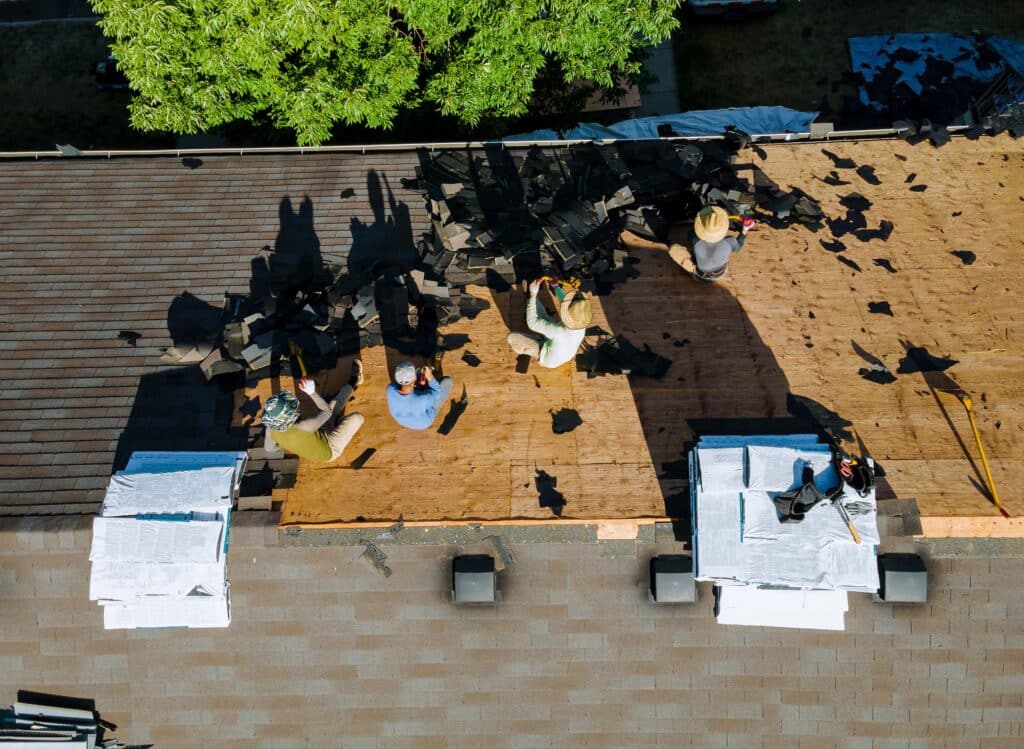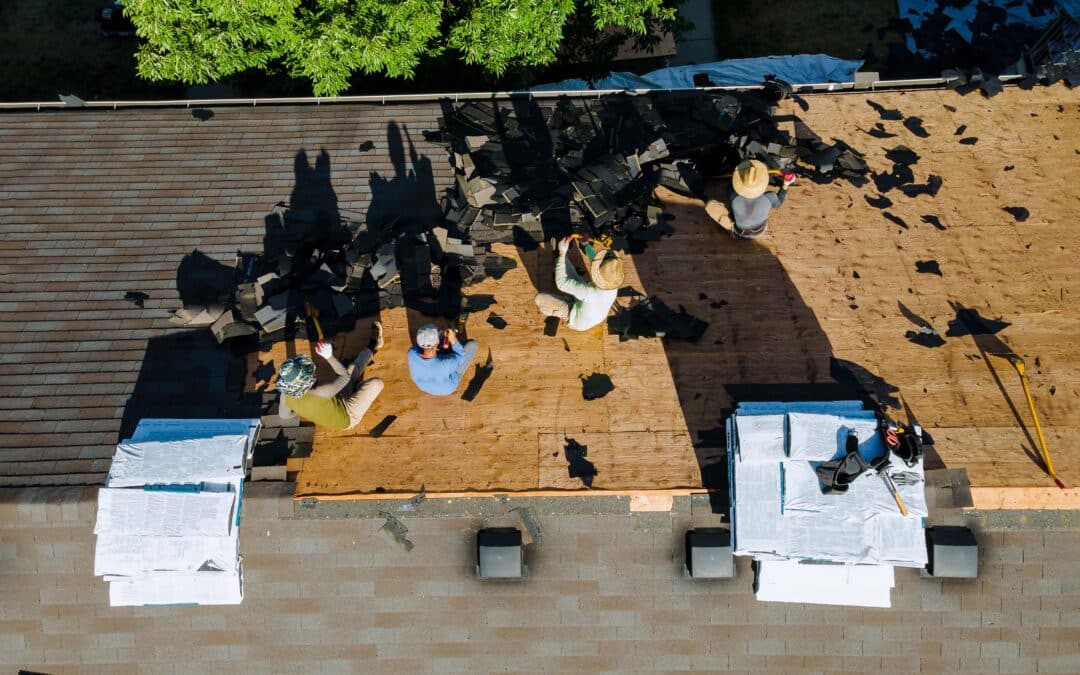When it comes to your home, the roof is one of the most critical components, standing strong against all weather conditions. A well-maintained roof not only protects you from rain or shine but also contributes to your home’s overall value. If you’re in San Antonio and considering a roof replacement, there’s much to think about—like costs, materials, and finding the right contractor for the job. In this article, we’ll break down everything you need to know so that you can make a smart choice when it’s time for a new roof, making the process as smooth as possible for you and your family. Let’s dive in!
When seeking roof replacement services in San Antonio, TX, it’s important to choose a licensed and insured contractor with a solid reputation, such as DV Roofing. Consider factors like experience, types of materials offered, warranties, and customer reviews to ensure you receive high-quality service tailored to your specific needs.

Choosing a Roofing Contractor in San Antonio
Selecting the right roofing contractor is not just about finding someone who can nail shingles. It’s about going through a thoughtful process to ensure that the person you hire will do the job right, with care and expertise. Start by considering the contractor’s reputation. Examine online platforms like Yelp or Angie’s List for feedback from previous clients; you want to look for consistent positive reviews that speak to their reliability and quality work. Don’t forget to check their Better Business Bureau (BBB) rating too, which can provide insights into any complaints lodged against them.
Once you’ve honed in on a few candidates, your next step should be to verify their credentials.
Ensure the contractors you are considering have the proper licensing, bonding, and insurance in Texas. This is not just a formality; having these credentials protects both you and them professionally. You can easily verify this information on the Texas Department of Licensing and Regulation website. This step gives you peace of mind, knowing that you’re working with someone compliant with local laws, which ultimately protects your investment.
Next, consider the experience that each contractor brings to the table.
Contractors who have operated within the San Antonio area for several years possess valuable knowledge about local weather patterns and specific challenges affecting roofing in this region. For instance, they will know which materials withstand our hot summers or how to handle heavy rains without compromising your roof’s longevity. This kind of localized expertise can save you headaches—and dollars—down the line.
After you’ve assessed reputation and experience, it’s time to focus on your estimates.
It’s wise to obtain multiple quotes from different contractors. This allows you to gauge pricing—but be vigilant about those estimates that seem unusually low. A significantly underbid price could indicate shortcuts in either materials or labor, raising red flags regarding their overall quality. Remember, when it comes to roofing, you often get what you pay for.
Finally, consider the warranty offered by prospective contractors.
Choose those who provide a comprehensive warranty covering both labor and materials. A good warranty not only speaks volumes about the quality of the products used but also assures you of ongoing support should any issues arise after installation. This backing can be invaluable as roofing material ages, protecting you against unforeseen repair costs.
“DV Roofing has been my go-to for roofing needs for the past decade. Their professionalism and quality are unparalleled,” says a San Antonio homeowner.
By keeping these factors in mind—reputation, credentials, experience, estimates, and warranties—you’ll be well-equipped to find a reliable contractor who meets your needs.
With this foundation laid out for selecting a contractor, let’s explore the various materials available for your roof replacement project.
Roof Replacement Materials & Options
When it comes to roof replacement, selecting the best materials is crucial because they influence not only your roof’s durability but also its appearance and maintenance costs. Knowing what’s out there helps you make an informed decision as you invest in your home.
Popular Material Types
Let’s take a closer look at some of the most popular options available for roof replacements:
Asphalt shingles are by far the most common choice among homeowners. Their affordability, combined with a lifespan of 20-30 years, makes them an attractive option. They come in various colors and styles, allowing for a customizable look that fits almost any home. Moreover, their easy installation translates to lower labor costs. However, potential buyers should remember that their lifespan is shorter compared to other materials.
On the other hand, metal roofs present a strong case for durability and energy efficiency. They’re incredibly tough, typically lasting 50 years or more while reflecting heat away from your home, thereby reducing energy costs. Metal roofs repel rain and snow, which minimizes maintenance issues over time. Furthermore, they are lightweight, so they can be installed over existing roofing without significant structural changes.
Clay and concrete tiles offer striking aesthetic appeal along with extraordinary longevity—lasting up to 100 years! They provide excellent insulation properties and resilience against severe weather conditions. However, they do come at a higher price point and require professional installation due to their weight and complexity.
For those willing to invest significantly more upfront, slate roofs are known for their exceptional durability and classic beauty. While they can last over 100 years as well, the heavy material requires substantial structural support—especially in homes situated in areas prone to foundation shifts.
A noteworthy statistic from the National Association of Home Builders reveals that asphalt shingles dominate the market, being installed in approximately 75% of all American homes. This highlights their enduring popularity.
Each of these materials has its own strengths and weaknesses; understanding your specific needs and budget will guide you toward the most suitable choice for your home’s new roof. Exploring factors like climate impact, architectural style, and long-term maintenance costs will inform your decision-making process as we move forward into discussing what the actual replacement entails.
The Roof Replacement Process

The roof replacement process is a comprehensive task that ensures your home remains safe, structurally sound, and aesthetically pleasing. Let’s walk through each step thoroughly so you know what to expect when it’s time for this significant investment.
Step I – Initial Inspection
The journey begins with a thorough inspection of your existing roof by experienced contractors. This initial assessment is crucial as it helps identify not just visible damage but also underlying issues. They’ll check for signs of leaks, mold, or weakened structural components. Think of this as a health check-up for your home—ensuring everything is in good shape before diving into repairs or replacements.
Step II – Cost Estimation
Once an assessment is completed, the contractor will provide a detailed estimate. This document will cover all aspects—materials, labor, and any additional repairs necessary to restore your roof’s integrity. It’s essential to clarify not just the numbers but also the materials being suggested, as opting for higher quality can save you money in long-term maintenance.
After reviewing and approving the estimate, preparation for the replacement can begin.
Step III – Preparation
During the preparation stage, protection of your property becomes paramount. Contractors meticulously safeguard landscaping, vents, and other vulnerable areas with tarps and boards to ensure nothing gets damaged during the project. It’s like getting ready for a party—you want everything pristine before guests start arriving!
Step IV – Old Roof Removal
When the time comes to remove the old roof, contractors will strip it down to its decking. This is where they can discover hidden problems such as rotting wood or compromised underlayment. Replacing any damaged wood at this stage is critical; it forms a solid base for your new roofing system. It’s important to recognize that this phase involves some noise and debris, but it’s a necessary step towards achieving a reliable and beautiful roof.
Now that we have laid down a finished foundation, it’s time to add new materials.
Step V – Installation of New Roofing Materials
With a clean slate prepared, contractors will proceed with installing underlayment followed by tiles, shingles, or metal sheets based on your chosen materials. This part of the process is exciting; new layers mean enhanced protection against elements, improved energy efficiency, and an updated aesthetic appeal. Additionally, be sure to ask how ventilation will be handled because proper airflow is vital for maintaining longevity in roofing systems.
Step VI – Final Inspection
Finally, once installation is complete, a post-installation review ensures every detail meets local codes and quality standards. During this last step, don’t hesitate to ask questions or raise concerns about what was done during installation. It’s essential that you feel confident in the work that’s been performed over your head!
Understanding each of these steps provides invaluable insight into what it takes to replace a roof effectively. Gaining this knowledge sets the stage for discussing what expenses are typically involved in such projects.
Cost of Roof Replacement in San Antonio

Costs for roof replacement can fluctuate widely based on various factors including the materials chosen, the size of your roof, and the complexity of the installation. As a homeowner, it’s vital to comprehend these variables to make informed choices and budget effectively. While it might be tempting to choose the cheapest option, investing in quality materials often pays off in the long run by extending your roof’s lifespan and reducing future repair costs.
Average Pricing
| Material Type | Cost Per Square Foot (Installed) |
|---|---|
| Asphalt Shingles | $3.50 – $5.50 |
| Metal Roofing | $7.00 – $12.00 |
| Clay/Concrete Tiles | $10.00 – $18.00 |
| Slate | $15.00 – $25.00 |
These pricing estimates reflect not only material costs but also labor expenses for installation, which can vary depending on contractor rates in your area. For example, asphalt shingles are typically the most economical choice for homeowners in San Antonio; they provide a good balance of durability and affordability. On the other end of the spectrum lies slate roofing, known for its longevity and aesthetic appeal, but it comes with a higher price tag due to both material and specialized installation requirements.
According to HomeAdvisor, while the national average for roof replacement hovers around $8,000, in San Antonio, this range can be quite diverse—spanning from $6,000 to $20,000 depending on factors like roof size and material selection. The high end of that range might include intricate designs or additional features such as skylights or improved insulation.
It’s advisable to get a detailed estimate from a trusted roofing contractor like DV Roofing to fully understand what you’re paying for and avoid surprises down the line. This can include free no-obligation inspections where professionals assess your current roofing situation and recommend necessary services tailored to your needs.
By fostering an understanding of expected costs and available materials, you empower yourself to make decisions that enhance your home’s value while ensuring long-term functionality and safety.
With these financial considerations in mind, it’s essential to understand how environmental factors influence the durability of different roofing materials.
Weather and Roof Durability
San Antonio’s weather can indeed be a mixed bag—its intense heat paired with sudden downpours creates unique challenges for roofing materials. The issue lies in how these extreme conditions influence the structure of roofs over time. When the sun blazes, roofing materials like asphalt shingles expand, but as temperatures drop at night, they contract again. This cycle of expansion and contraction increases the risk of wear and tear, potentially manifesting as cracks or even complete roof failures if left unaddressed.
Heavy rains can lead to pooling water if proper drainage isn’t ensured. Water pooling adds extra weight to your structure and accelerates deterioration. Furthermore, hailstorms, while often quick, can deliver tiny but significant impacts that erode protective coatings on shingles or dent metal roofs. The cumulative effect is a roof that struggles to maintain its integrity under adverse conditions.
This brings us to an important consideration: selecting materials designed to withstand the whims of Texas weather. Metal roofs, for instance, are highly regarded not just for their aesthetic appeal but also for their resilience against extreme temperatures and strong winds. Their reflective properties help reduce heat absorption during hot summers, and their strength offers superior protection against hail damage.
“Choosing a metal roof for my home in San Antonio was one of the best decisions; it withstood a severe storm without any damage,” shares a satisfied homeowner.
Such testimonials highlight the importance of considering longevity when investing in a roof replacement. Besides metal, high-quality architectural shingles also provide better structural integrity than standard options. They often include advanced technology that enhances durability against UV rays and moisture intrusion.
It’s crucial to factor in both initial costs and long-term benefits when selecting your roofing material. It might seem tempting to go for lower-priced options; however, investing in high-quality materials could mean fewer repairs down the line and ultimately save you money.
Understanding these weather-related challenges is key to making informed decisions about roofing solutions tailored to your area’s climate. This awareness is equally important when evaluating your home’s state and determining necessary repairs moving forward.
Assessing Roof Damage & Repair Needs
Regular assessment helps identify potential problems early, ensuring that minor issues don’t escalate into significant expenses down the road. You might not always be able to tell from the ground if your roof needs attention, but there are several indicators you can look out for that will help you assess its condition without needing to climb up a ladder every time.
Key Indicators of Damage
Missing or Torn Shingles: This often signifies wind damage and could be the first sign that your roof needs repair. If you notice shingles missing or some raised at odd angles, it’s best to address these before they lead to leaks.
Granules in Gutters: Spotting granules from asphalt shingles in your gutters is another red flag. These granules protect the shingles from UV rays and water; their loss can mean that your roof is wearing down faster than expected.
Leaks or Water Stains: Keep an eye on your ceilings and walls for any leaks or water stains. They may indicate underlying damage to your underlayment or flashing—components vital to keeping water out.
Sagging Roof Deck: A sagging roof deck is perhaps one of the most alarming signs. It can point to serious structural issues beneath the surface, which means immediate attention is needed to prevent further damage or even collapse.
Consider scheduling annual inspections, particularly after heavy storms when roofs are subjected to high winds and rain. Just think of it as a regular check-up; early detection can save you from extensive future repairs and give you peace of mind about your home’s safety.
If you’re unsure about your own assessment abilities or want a professional opinion, don’t hesitate to reach out. For more information or to schedule an inspection, contact DV Roofing—a family-owned business with over 28 years of experience serving the San Antonio area and beyond at DV Roofing.
By being proactive and informed about your roof’s health, you ensure its longevity and maintain the safety and comfort of your home. Regular inspections can make all the difference in avoiding costly repairs in the future.



Recent Comments